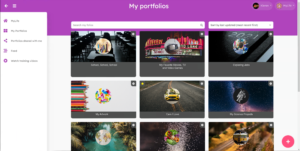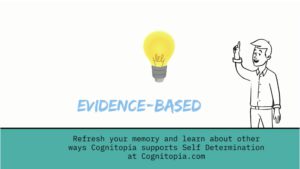Cognitopia Evolution: Then and Now
In many ways, Cognitopia got its start when our CEO and founder Tom Keating became the primary caregiver for his brother James who experienced autism. James moved from their parents’ home in New York to live with Tom and their other brother, Francis, in Eugene, Oregon in 1981.
After sharing different homes and apartments over the years, James developed the functional daily living skills to live in his own apartment, which he really wanted, but that could only happen with a fairly high level of daily support. To augment visits and check-ins that were happening one to three times a day, Tom configured a home automation sensor network for James’s apartment that could provide information on key events like whether or not James was home, what part of the house he was in, whether the shower had been used, and whether he was in bed.
“As his primary caregiver, I didn’t want to be in James’ space all the time, and he didn’t want me to be there all the time either,” Tom explained. “Having the sensor data gave me another tool to provide a kind of virtual support that gave him some room and gave me a certain peace of mind, especially when I had to travel and couldn’t be there as frequently.”
This early practical application of “smart home” assistive technology for supported living also integrated schedules and reminders through Picture Planner, a visual calendaring application that was developed through grant funding that Tom obtained from the US Department of Education. Picture Planner was designed to provide an image-based activity scheduling tool for users with significant cognitive disabilities.
Over time, the emergence of affordable mobile devices and the advent of smartphones led Tom to develop an entire suite of web-based tools for scheduling, reminders, goal management, person-centered planning, and task analysis—the Cognitopia Platform for Self-Determination. Picture Planner is no longer available in its original version but is being redeveloped as one of the Cognitopia applications. A key feature of the Cognitopia Platform remains the virtual support capabilities it offers to teachers and caregivers. As a web-based platform, it leverages the power of modern mobile devices and increasingly ubiquitous internet connectivity.
In this video, Tom illustrates components of a poster he created to showcase the key components of James’ home sensor network and talks about the evolution of the company and the Cognitopia Platform of apps currently available today.
For more information, visit Cognitopia.com.
Julie Henning has been with Cognitopia since 2015. In that time, she has been involved in customer support, training, marketing, documentation, social media, and data collection. Some of her favorite projects have been mentoring our videographer intern, Nate, and weekly classroom testing and curriculum development for the many students in the 4J Connections Transition program. She works closely with Eugene-based SLLEA (Smart Living, Learning & Earning with Autism) to integrate Cognitopia’s self-management tools into the organization and structure design input and support platform implementation. Professionally, Julie has over twenty years’ experience working in engineering, technology, software development, and journalism; a path made possible with two degrees in Technical Communication: a BS from the Milwaukee School of Engineering and a MS from Colorado State University. A single mom of three high schoolers (grades 9, 10, and 11), Julie has introduced Cognitopia to terms such as “sick” and “yeet,” while overseeing the office coffee consumption. In her free time, she enjoys playing recreational soccer, improv comedy, and traveling.



